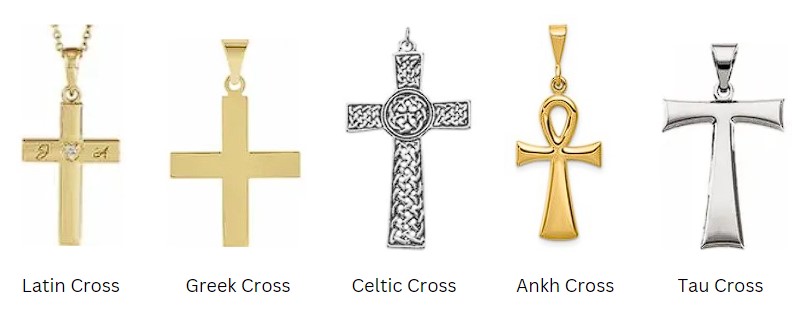Exploring the Design of Crosses
 April brings spring, with plants, flowers and trees coming to life. It also brings us Easter, the celebration of the resurrection of Jesus Christ after crucifixion by the Romans. The cross has become a symbol of both of Christ himself and of the faith of Christians. It is included in the sacraments of baptism, confirmation and communion. While baptism happens within the first few weeks or months of life, confirmation takes place in the Spring after Easter. A gift of a cross, as a necklace or even a bracelet, is the traditional gift for both baptism and confirmation symbolizing faith, hope and love.
April brings spring, with plants, flowers and trees coming to life. It also brings us Easter, the celebration of the resurrection of Jesus Christ after crucifixion by the Romans. The cross has become a symbol of both of Christ himself and of the faith of Christians. It is included in the sacraments of baptism, confirmation and communion. While baptism happens within the first few weeks or months of life, confirmation takes place in the Spring after Easter. A gift of a cross, as a necklace or even a bracelet, is the traditional gift for both baptism and confirmation symbolizing faith, hope and love.
The cross has been represented in many ways throughout history with the crux immissa, or Latin cross, whose base stem is longer than the other three arms, and the crux quadrata, or Greek cross, with four equal arms, being the best known. When considering the gift of a cross, consider the denomination, culture, and historical significance of the type of design you purchase. Here are details about just a few of the designs:
- Celtic Cross: This cross includes the vertical and horizonal bars of the Latin cross and also includes a ring around the intersection of the bars. It is believed to be associated with regions evangelized by Irish missionaries in the 9th-12th
- Ankh Cross: Originally of Egyptian origin and symbolizing life on earth and in the afterlife, the ankh was chosen by the Coptic Christians in Egypt as a symbol of Jesus’ promise of everlasting life
- Tau Cross: Originally a pagan symbol and shaped like the Latin letter T, it is referred to as ‘the Cross of St Francis’ (founder of the Franciscans), ‘the Cross of St Anthony’, the ‘Crux Commissa’ and ‘the Old Testament cross’
There are many, many more cross designs and we encourage you to explore them and their meanings. Stop by Bridgewaters and let us help you search for the perfect gift for a baptism or confirmation!
